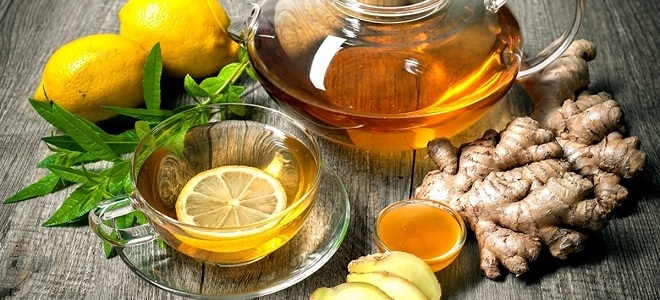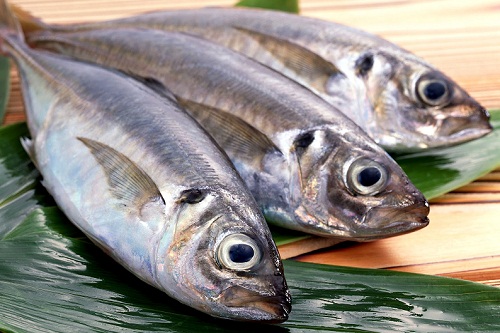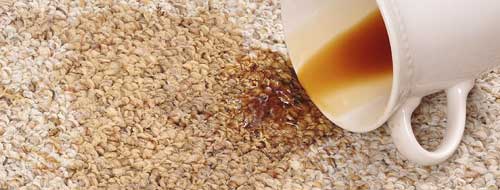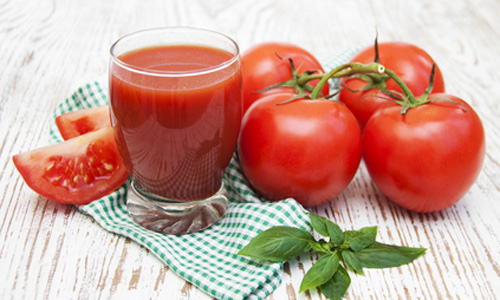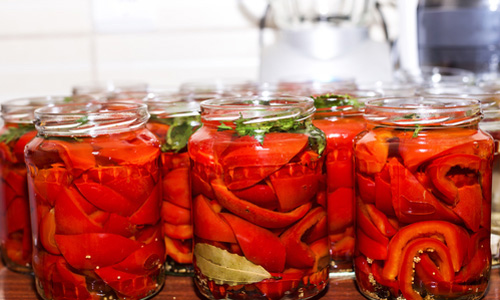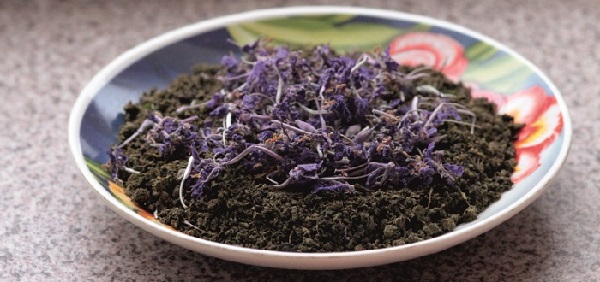Dishes with bechamel sauce. Ingredients for fish sauce
Famous sauce bechamel It is a masterpiece of French culinary, its refined taste complements many dishes, making them even tastier and more tender. FROM recipe for bechamel sauce and recipes using it you will find in the article
Bechamel is one of the five basic sauces of French cuisine, also called "mother" or "great." These are sauces Velute (veloute), Espanyol (espagnole), Dutch (hollandaise), bechamel (bechamel) and tomato. Base sauces have not received such a name for nothing, because all sauces of French cuisine are prepared on their basis, and there are more than 3 thousand of them.
The Bechamel sauce comes from Louis Béchamel, the majordom of French King Louis XIV. But hardly this aristocrat came up with the famous sauce on his own. Most likely, he hastened to name with his name the brainchild of one of the royal cooks. And not in vain: the simple combination of the butter-flour mixture with cream became a real sensation of French cuisine. What is so special about it?
Bechamel sauce is based on a ruble and milk (in the original version, cream). Ruble, or otherwise, ru (from the French “roux” meaning “red”) is a mixture of butter and flour, fried to a golden color.
Of the milk component, only milk or cream is suitable for making the sauce. If you replace them, for example, with sour cream or another sour milk product, then when heated, they can curl up, and the sauce will be spoiled. When choosing cream for making the sauce, you need to keep in mind that they cannot be overheated, otherwise they will lose their homogeneous structure. And in order to return the mixture to its original state, you will have to add various liquids to the sauce. For example, broths: vegetable, fish, meat. Therefore, often, using cream in a sauce, cooks simultaneously introduce broth into it. However, the most ideal option for making this sauce is milk with a fat content of 2.5%.
Flour and butter for cooking are taken in equal quantities, and the dose of milk is determined depending on what consistency the sauce wants to get: liquid, medium or thick.
To give the sauce a light aroma, milk is pre-flavored. To do this, spices are placed in cold milk, after which it is gradually heated and infused. The choice of spices is wide enough. These are roots (onions, parsley or dill root), spicy herbs (thyme, oregano, rosemary, marjoram), spices (garlic, onions, peppers). At the same time, it is better to put herbs and small spices in a wrap bag - so it will later be easier to remove them from milk. With roots and slices of vegetables, it’s easier - after the milk is infused, you just need to strain it.
After aromatization, milk can be used for its intended purpose. It is gradually introduced into the butter-flour mixture - if you add all the milk at once, the flour will float to the surface and lumps will form in the sauce. When the sauce has the necessary density, it is removed from the heat. Everything - the sauce is ready!
Bechamel sauce goes well with dairy veal, pork, poultry, white fish, potatoes, celery and cauliflower. However, with a combination of vegetables and sauce, you need to remember that bechamel is still a sauce, not a dressing: during the heat treatment it does not evaporate and is not absorbed into the products, but remains on top.
And finally, the main secrets of Bechamel sauce:
During the steaming, the flour should acquire a golden hue. Do not overcook it - this will give the sauce an unpleasant aftertaste and spoil its appearance.
Pour milk into the ru gradually, in a thin stream, so that no lumps form in it.
If the formation of lumps could not be avoided, strain the sauce after cooking.
Stir the sauce only with a wooden spoon: metal appliances can pick up a burnt crust from the bottom of the dishes and fried, dense particles will fall into the consistency of the sauce.
Do not put spices in boiling milk: only gradual heating most fully reveals their aromatic qualities.
It is better to fry the onions and vegetables before putting them in milk in a dry frying pan - this will give them a more intense taste.
If it is planned to serve bechamel with fish, you can not fry vegetables - the fish prefers a more delicate aroma.
It is better not to use lemon juice for flavoring the sauce, as the acidic environment helps to curl milk. Lemon juice will completely replace the zest.
Do not overdo it with spices - they should only shade, and not overdo the main, creamy flavor of the sauce.
For stewing, it is better to make a sauce with a more liquid consistency.
Meat and fish are not placed raw in the sauce, but are first brought to half-preparedness.
As soon as characteristic bubbles appear on the surface of the sauce, it is ready.
So that the sauce (as well as the ru) does not burn, you need to cook it over low heat.
Bechamel is served hot, as a thin film forms on cold sauce, which spoils its appearance. To eliminate it, the sauce again needs to be poured into the pan, add a little milk, heat and mix well.
The sauce can be stored in the refrigerator for 2-3 days.
Ideal bechamel has a light cream color, a homogeneous structure and a texture of medium density, similar to the consistency of liquid puree. Such a sauce drains from a spoon in a uniform trickle, and does not drop out of it in a single piece.
Bechamel sauce
Milk 2.5% - 100 ml
Flour - 50 g
Butter - 50 g
Spices to taste
Pre-soften the oil and rub flour into it. Spread the mixture on a preheated pan and fry over a low heat until golden brown. . Add spices to milk, heat and simmer for 3-5 minutes over low heat. Then we take out the spices, and pour the milk in a thin stream into the butter-flour mixture. Constantly stirring, bring the sauce to medium density and remove from heat.
Bechamel sauce (in the microwave)
Butter - 60 ml
Flour - 60 g
Milk - 750 ml
Nutmeg (grated) - to taste
Black pepper (ground) - to taste
Salt to taste
Melt the oil in the microwave at 100% power for 1-2 minutes; add flour to it and heat at the same power for 1 minute. Pour milk, stirring vigorously. Boil the sauce for 5-6 minutes, without covering, at full power, stirring from time to time. Salt, pepper and add nutmeg. We filter.
Bolognese Lasagna
Veal - 300 g
Onions - 150 g
Salt to taste
Pepper to taste
Carrots - 50 g
Vegetable oil - 75 g
Cream - 50 g
Pilati Tomatoes - 50 g
Pasta - 100 g
Parmesan Cheese - 20 g
Bechamel sauce - 50 g
Tomato juice - 200 g
Flour - 3 g
Butter - 3 tbsp
Grind the veal in a meat grinder and fry in vegetable oil. Finely chop the onion (50 g), sauté and add to the meat. Cut the carrots into small cubes and put them to the meat as well. Add cream, chopped tomatoes, salt, pepper and simmer for 15 minutes. In boiling salted water with the addition of vegetable oil, lower the paste and boil until cooked. Then we discard the paste in a colander and let the excess water drain. Put a layer of paste into the mold, put a layer of minced meat on it. Sprinkle portioned lasagna with grated cheese and bake until it turns golden.
For the sauce, finely chop the onions (100 g) and fry it in butter (2 tbsp. Tablespoons). Add tomato juice, salt and pepper to it. We pass the flour in butter (1 tbsp. Spoon) and put in the sauce. Bring it to a boil and boil over low heat until it thickens. Then cool the sauce, add “Bechamel” to it and beat in a blender. Pour the prepared lasagna with sauce and serve.
Pancakes "Omonier"
Boiled tongue - 50 g
Bacon - 25 g
Ham - 30 g
Butter - 15 g
Onions - 10 g
Gherkins - 15 g
Mushroom Sauce - 50 ml
Bechamel sauce - 40 ml
Flour - 3 tbsp.
Eggs - 1 pc.
Milk - 200 ml
Vegetable oil - 25 ml
Chives - 5 g
Salt to taste
Tongue, bacon, ham, gherkins, onions, cut into small cubes and lightly fry in butter, then add the sauces (mushroom and bechamel) and stew until cooked. From the prepared dough (milk, egg, flour, salt, whipped until smooth), fry the pancakes and put the minced meat in them. Then we form bags from pancakes. As a culinary twine we use feathers of green onions.
Serve pancakes with sour cream.
Subtleties of making pancakes
If you pour a few tablespoons of fat into the pancake dough and mix well, then the pan will not need to be greased every time.
Sturgeon with bechamel sauce
Sturgeon - 350 g
Butter - 25 g
White wine - 30 ml
Champignons - 50 g
Pepper to taste
Salt to taste
Milk - 110 ml
Oil - 10 g
Flour - 10 g
Cut the fish fillet without skin and cartilage into portions, salt, sprinkle with black pepper and leave for 10 minutes in wine and butter. We wipe the raw fresh mushrooms, add them in oil and prepare mashed potatoes. From milk, butter and flour we prepare bechamel sauce, add to it mashed mushrooms and juice in which the fish was stewed. Pour a little sauce into the pan so that the fish is completely closed by it, and bake in a very heated frying cabinet. Serve in the same bowl.
In general, bechamel is a classic French sauce made from a flour dressing called ru and milk.
Most likely, the sauce appeared as a result of redoing an old recipe, and one of the royal chefs dedicated it to the nobleman - the Marquis Louis de Beshameil - to the head waiter Louis XIV. Louis de Bechamel was reputed to be an excellent gourmet and an enlightened art lover. According to one legend, the old Count Descars even resented this: “Well, this lucky Bechamel: under this white sauce poultry was served to my table 20 years before it was born, but for some reason the sauce wasn’t named ! "
This is not a classic version. I stepped back from the original recipe by replacing milk with cream and adding lemon juice.
It is necessary:
1 tbsp. flour spoon
1 tbsp. a spoonful of butter
200-300 ml cream (10%)
a pinch of salt
a pinch of ground nutmeg
1/4 lemon
Cooking time: 10 minutes.
Combine butter and flour in a saucepan. Stir constantly, fry over medium heat for about 1 minute. The mixture should not darken.


Slowly, pour in a thin stream of cream. Stir to avoid lumps. However, if all the same the flour is knocked together, use a mixer or a blender to get rid of them. If there is no mixer or blender at hand, try whisking the sauce a little with a whisk or a fork or rub it through a sieve.

At the very end of cooking, add salt, a pinch of nutmeg and a little freshly ground pepper to the sauce. Peppers are best used white or pink - they are not as sharp as black, but they will bring their own note.

"Vigorously" stir)

Remove the sauce from the stove and squeeze the lemon juice. It does not hurt to add finely grated zendra here.

You can serve the sauce warm or cold.
It is with him that they make lasagna. Pasta sheets are layered with a sauce made from tomatoes, minced meat and bechamel sauce. Combined with mozzarella and parmesan, you’ll get a practically canonical version (practically, because only, probably, a true Italian, a generation, at least in the third, can truly prepare a traditional classic of Italian cuisine).
Once, a long time ago, I cooked it - and got a nasty-tasting paste. With lumps. After this bad experience, for many years I forgot about the existence of bechamel.
However, One of five classic base French sauces. It is also used as a component in many dishes of European cuisine and as a basis for various sauces. No wonder it is one of the five basic sauces of classic French cuisine - it is used not only on its own, but also as the basis for a number of other sauces, as an integral part of dishes such as soufflé.
I had to learn how to cook it so that now it is my favorite sauce.
Bechamel - the sauce is quite simple in composition. There are only three essential components - butter, flour, milk. There are only two essential spices - salt and pepper.
And the sauce cooking technology is also simple: the flour is fried in oil (and you get a mixture called roux - RU), then the boil is boiled with milk, salt and pepper are added - that's all.
Why do beginners get a paste instead of a creamy sauce or lumps that make the sauce not have a smooth, silky texture?
The secret, as always, is in technology.
1. To bechamel had a creamy taste, it is boiled either no more than 5-7 minutes, or at least 40-60 minutes.
Moreover, long cooking is a classic approach, short - a modern one.
Why so, and not otherwise?
It has been proven in practice that if you cook flour for longer than 10 minutes and less than forty-hours, then the sauce will taste “raw” flour, the same nasty paste taste.
During a short cooking, this taste does not have time to develop, and during a long cooking it disappears.
2. To avoid lumps and ensure a smooth structure, milk and ru should be diametrically opposed to the temperature.
If ru is cold (made in advance and stored in the refrigerator), then the milk should be hot.
If the milk is hot (cooked with spices), then the ru should be cooled before mixing
. If rus is hot and boiling milk - instant brewing of flour occurs and it is unlikely to be able to avoid lumps, in any case it will be difficult.
If milk is cold and cold, then flour coated with butter will not mix with milk, but will float in lumps. Such a sauce will need to be stirred intensively all the time until it is heated, otherwise part of the lumps of flour will have time to brew without dissolving.
A good option is warm ru and warm milk. Inconvenience - one needs to be heated, the other cooled before mixing, which is not always convenient.
The recipe.
For cooking, take an equal amount of butter and flour.
For a liquid sauce, bechamel take a ratio of 120-180 g ru per liter of milk, for a thick sauce used in soufflé - 300 g ru per liter of milk.
However, the simplest and most memorable recipe: 10 grams of butter -10 grams of flour - 100 ml of milk.
In addition to the classic sauce, there is a fully-fledged, more seasoned option.
Classic bechamel (per 500 ml of milk)
It is best cooked in a pan with one handle, with a thick bottom and non-stick coating.
You can not use aluminum pans without coating - the cream in them turns gray.
The sauce begins with the cooking of the ru.
1. Put 50 grams of butter in a skillet and melt it over a very low heat. In no case should the oil begin to fry! If it is very cold, you need to cut it into small cubes, otherwise part of the oil will start to burn before all the butter has melted.
Remember - you cook white sauce, the oil should not change color!
2. Pour 50 g of flour into the oil and carefully rub the mixture with a spatula. While stirring and grinding, hold the flour on the fire until it “boils” and rises with a “hat”, and foam appears around.
Like this.

Lumps of flour - if any - at this stage should not confuse you.
3. Measure out 500 ml of milk. Remove the saucepan from the heat and gradually, in small portions, slowly, add milk, whipping and stirring the sauce all the time. Spend 100 - 150 ml of milk on it.
4. When the sauce becomes homogeneous, add the remaining milk, return the saucepan to the fire, constantly stirring, bring the sauce to a boil over medium heat and boil it for 5-7 minutes ( maximum) from the moment of boiling.
5. Season the sauce to taste with salt and white, freshly ground pepper. Transfer the sauce to a dry container.
6. A piece of cling film grease with butter, firmly press the film to the surface of the sauce.
7. If you want to keep the sauce warm, put it in a water bath.
If you want to cool - put the dishes with sauce in a container of ice water.
Cold sauce can be stored in the refrigerator for 2-3 days without compromising on quality and taste.
Bechamel with spices (per 500 ml of milk)
1. Prepare the ru (see above, the proportions are unchanged), then transfer it to a clean dish and set to cool completely.
2. Prepare a set of spices:
onion (ideally - The bulb is small, weighing 25-50 g color from violet to white. Both bulbs and leaves (feathers) are eaten raw, fried, sautéed, boiled, and pickled. Onions of sharp varieties are often used in broths, stews, soups, minced meat, and also added to meat, fish, vegetable dishes. Onions of sweet varieties are consumed fresh or pickled as a snack or side dish in salads.)
2 cloves
1 bay leaf
a piece Nutmeg is widely used in almost all culinary dishes: in salads, home and industrial sausages, first courses, meat, seafood, desserts, pastries, teas, coffee. Grated nutmeg gives the dishes a delicate, spicy, sweetish aroma and taste.
a few peas of white pepper
Crush everything and put into a spice trap (preferably).

3. Pour 550 ml of milk into a saucepan, add spices and boil milk for 15 minutes.
4. Strain the milk through a frequent sieve, return to a clean saucepan (if the milk is boiled strongly, add fresh milk to 500 ml), heat the milk almost to a boil (there is already a light steam, but there are still no bubbles), remove it from the heat.
5. Add COLD ru to milk. And - all at once! Stir the milk with a whisk until all the pouches are gone and the sauce becomes homogeneous.
6. Next - everything is the same as described above.
Errors and correction.
If the sauce is lumpy, wipe it through a frequent sieve or beat in a blender.
If the sauce is too thick, add milk, stir the sauce and warm again.
If the sauce turned out to be too liquid, then there are two ways to rectify the situation: boil the sauce or add a small amount of butter, mashed with flour (flour: 1: 1 butter), and then boil the sauce a couple of minutes after boiling.
What sauce to cook?
If bechamel goes as an integral part of another dish or as a binding additive - and unless otherwise specified in the recipe -
then classic bechamel is used.
If you like spices and use bechamel as a sauce, giving the dish a neutral taste, add an extra touch - cook bechamel with spices.
Bechamel sauce or white sauce is perhaps one of the most famous French sauces. It perfectly fulfills all the functions of the sauce: improves the taste and appearance of the dish, increases its juiciness and nutritional value. Bechamel is one of the five main sauces of classic French cuisine. It goes well with almost all hot dishes of meat, poultry, fish, eggs and vegetables.
The basic recipe for bechamel sauce is simple, like all ingenious: fry an equal amount of butter and flour, pour hot milk. It would seem nothing special, but much can be said about this sauce.
As often happens with French recipes, the roots of Bechamel sauce originate from  of antiquity. At the beginning of our era, cooks thickened sauces with wheat flour and added honey and many herbs and spices. The recipe for flour white sauce has been preserved in the cuisines of France, Italy, Greece and some other countries.
of antiquity. At the beginning of our era, cooks thickened sauces with wheat flour and added honey and many herbs and spices. The recipe for flour white sauce has been preserved in the cuisines of France, Italy, Greece and some other countries.
There is still debate over who and when invented bechamel. According to the official version, the sauce is named after Louis de Bechamel, Marquis de Nuantel (1630-1703), the famous seventeenth-century financier and manager in the kitchen of Louis XIV. According to legend, the marquis added cream to the veal velet sauce, trying to come up with a decent accompaniment for dried cod. However, there is no evidence that he was a cook or a gourmet and experimented with dishes. Moreover, bechamel sauce was  known long before his birth. Perhaps the creator of the sauce was his contemporary Pierre de la Varen, the chef of Louis XIV. In gratitude for something, he named his creation in honor of Louis de Bechamel.
known long before his birth. Perhaps the creator of the sauce was his contemporary Pierre de la Varen, the chef of Louis XIV. In gratitude for something, he named his creation in honor of Louis de Bechamel.
Another version claims that bechamel sauce appeared in France thanks to Catherine de Medici (1519-1589), the wife of Henry II. In 1533, she came to France from her native Italy with her cooks and pasta masters. This event enriched the palace cuisine of France with traditional Italian dishes, among which was bechamel sauce. In favor of this version is the fact that in Italian, a white sauce of flour, butter and milk with parmesan, white pepper and nutmeg is called balsamella (Balsamella, Besciamella). In Italy, from ancient times, it has been cooked with lasagna, cannelloni, vegetable gratin.
Be that as it may, the dawn of the popularity of bechamel sauce came in the 17th century, when  numerous experimenters decorated it with wines, vegetables, bacon, spices, broths from chickens and partridges, filtered several times and steamed in the oven. The recipe was unified in the 18th century, during the reign in the royal cuisine of Antonin Karem. It was he who removed all unnecessary and compiled a classic recipe for a greasy white sauce, which in addition to the butter and flour mixture included cream and yolks. His follower Auguste Escoffier removed the eggs from the recipe, but used the meat that was closer to the veloute sauce.
numerous experimenters decorated it with wines, vegetables, bacon, spices, broths from chickens and partridges, filtered several times and steamed in the oven. The recipe was unified in the 18th century, during the reign in the royal cuisine of Antonin Karem. It was he who removed all unnecessary and compiled a classic recipe for a greasy white sauce, which in addition to the butter and flour mixture included cream and yolks. His follower Auguste Escoffier removed the eggs from the recipe, but used the meat that was closer to the veloute sauce.
Bechamel - is classified as a main white sauce, which means that on its basis you can cook many different sauces, for example such:
 . Mornay is a bechamel with the addition of grated cheese, usually parmesan and gruyere, but it is possible to add emmental and cheddar. Escofier recommends adding fish stock to the moraine. Morne is served with seafood and vegetables. A Hot Brown sandwich is prepared with it (an open sandwich with turkey and bacon, sprinkled with sauce).
. Mornay is a bechamel with the addition of grated cheese, usually parmesan and gruyere, but it is possible to add emmental and cheddar. Escofier recommends adding fish stock to the moraine. Morne is served with seafood and vegetables. A Hot Brown sandwich is prepared with it (an open sandwich with turkey and bacon, sprinkled with sauce).
. Nantua (Nantua) - bechamel with the addition of cream and crab oil. Served with seafood.
. Subiz (Soubise) - bechamel with the addition of onion puree. Served with fish, meat, poultry, vegetables.
Bechamel sauce recipes
Bechamel by Auguste Escoffier
Auguste Escoffier - the king of cooks and the cook of kings, the creator of the "Culinary Guide" -  a real bible of French culinary at the end of the 19th century. All his recipes are designed for restaurant cuisine, so do not be surprised at the number of ingredients and the complexity of execution. The result will be worthy of the royal table.
a real bible of French culinary at the end of the 19th century. All his recipes are designed for restaurant cuisine, so do not be surprised at the number of ingredients and the complexity of execution. The result will be worthy of the royal table.
Ingredients (per 5 liters of sauce):
650 g of flour sauce (350 g of sifted flour, fried in 300 g of butter),
5 liters of boiled milk,
300 g low-fat veal stewed in oil with 2 thinly chopped onions, a sprig of thyme, a pinch of pepper, a small nutmeg and 25 g of salt.
Cooking:
Mix flour gravy with hot milk, bring to a boil, stirring. Add the diced veal stew. Boil for an hour, strain through a cloth. For storage, pour the surface of the sauce with a thin layer of melted butter.  Quick way: Add meat, onion, thyme, pepper and nutmeg to boiling milk, cover and place next to the fire for 10 minutes. Then mix this milk with flour gravy, bring to a boil and boil for 15-20 minutes.
Quick way: Add meat, onion, thyme, pepper and nutmeg to boiling milk, cover and place next to the fire for 10 minutes. Then mix this milk with flour gravy, bring to a boil and boil for 15-20 minutes.
Escofier also explains how creamy sauce can be obtained from bechamel sauce: add a little cream, put on a large fire and evaporate for a quarter, stirring constantly. Strain, add still fresh fat cream and lemon juice.
The authors of the Book on Tasty and Healthy Food are much easier to prepare the famous French sauce. True, it is simply called there - white sauce for boiled rabbit, veal, lamb and chicken.
White sauce 
Ingredients:
1 tbsp flour
2 tbsp butter
1.5 cups of broth,
1 yolk.
Cooking:
Lightly fry the flour with the same amount of oil, dilute with filtered broth obtained from cooking meat, and cook over low heat for 5-10 minutes. Remove the sauce from the heat, add the yolk mixed with a small amount of sauce, add salt and the remaining oil to taste, mix.
For cues, meatballs, liver and fried game, the Book on Tasty and Healthy Food recommends preparing another sauce, similar to sour cream, like bechamel.
 Sour cream sauce
Sour cream sauce
Ingredients:
1 tbsp flour
1 tbsp oils
0.5 cups sour cream
1 cup meat broth.
Cooking:
Fry the flour in oil, dilute with broth or vegetable broth, put sour cream and cook over low heat for 5-10 minutes. Add salt to taste. Variety of sour cream sauce can be fried onions, added at the end of cooking.
In modern cookbooks, bechamel usually appears as a mixture of these two sauces - white and sour cream.
Modern bechamel 
Ingredients:
2 cups of milk (can be replaced with 1.5 cups of meat or fish broth and 0.5 cups of sour cream),
3 tbsp butter
3 tbsp flour
salt, allspice, nutmeg to taste.
 Cooking:
Cooking:
Fry the sifted flour in warmed butter until creamy and dilute it with hot milk or broth, stirring thoroughly. Bring the mixture to a boil and cook for 15-20 minutes until the sauce thickens. Season the bechamel cooked in broth with sour cream. Add salt and spices to the finished sauce, boil and strain.
Based on this sauce, you can make French sauce. To do this, you will need champignons and even more butter. Finely chopped mushrooms, salt and fry in oil to evaporate the liquid. Pour in bechamel sauce, stir and bring to a boil.
How can you use all this splendor? We offer several original recipes with bechamel sauce:
Recipes with Bechamel Sauce 
Croque-Monsieur and Croque-Madame
Behind these extravagant names are French hot ham and egg sandwiches. The preparation of the dish is very simple, but it’s not trivial sandwiches, but real French cuisine.
Croque-monsieur: grease pieces of bread with sauce, put ham and cheese between them, bake in the oven for 10-12 minutes.
Krok-madam: the same thing, but lay a fried egg on top.

Ingredients:
1 head of cauliflower,
50 g flour
50 g butter,
500 ml of milk
1 egg
salt, spices to taste.
Cooking:
Boil whole cabbage a couple, cool, disassemble into inflorescences. Melt a little, fry the flour, pour in hot milk, stir until smooth and boil for several minutes. Add beaten egg, salt and spices. Smear the baking dish with butter, pour a little sauce, put a layer of cabbage, pour the remaining sauce. Bake for 35-40 minutes at 200ºС. When the top starts to turn yellow, cover the mold with a lid or foil. Cool the finished dish, turn it on a plate. It will keep in shape.

Ingredients:
1 kg of eggplant
1 kg of potatoes
100 g of hard cheese
1 kg of mixed minced meat
300 g of tomatoes
100 ml of white wine,
2 onions,
100 ml of olive oil,
2 cloves of garlic,
200-300 ml of bechamel sauce,
cinnamon, cloves, parsley, pepper, salt - to taste.
Cooking:
Slice the eggplant and potato and sauté until golden brown. (To make the dish easier, you can bake eggplant and potatoes.) Fry the minced meat with finely chopped onions, pour wine, add salt, spices and simmer for 10-15 minutes. Add crushed garlic, chopped tomatoes and simmer until the sauce thickens.
We collect moussaka: put a layer of potatoes in a greased form, season with salt, sprinkle with cheese and herbs. Next - a layer of minced meat and a layer of eggplant. Sprinkle the remaining cheese and herbs on top, pour the bechamel sauce. Bake moussaka for 2025 minutes at a temperature of 200ºС. Cut and serve the dish slightly cooled.
 As it turned out, in Russia they confuse bechamel with its very distant relative - mayonnaise. Bechamel and mayonnaise are the oldest sauces in world cuisine. They have a completely different composition and different fields of application, despite the similar appearance and the same goals: to soften the consistency, add a plate of fat and juiciness. In the cuisine of France and Italy, the zones of influence of these sauces are clearly divided: bechamel is used in hot dishes, and mayonnaise - in cold ones. Unfortunately, bechamel is rarely found on the tables of modern Russians, completely superseded by mayonnaise. This is a gross mistake. In fact, mayonnaise is a cold sauce, appropriate only in salads. Baking, stewing and frying in mayonnaise, adding it to hot soup is not only a bad taste, but also a health hazard.
As it turned out, in Russia they confuse bechamel with its very distant relative - mayonnaise. Bechamel and mayonnaise are the oldest sauces in world cuisine. They have a completely different composition and different fields of application, despite the similar appearance and the same goals: to soften the consistency, add a plate of fat and juiciness. In the cuisine of France and Italy, the zones of influence of these sauces are clearly divided: bechamel is used in hot dishes, and mayonnaise - in cold ones. Unfortunately, bechamel is rarely found on the tables of modern Russians, completely superseded by mayonnaise. This is a gross mistake. In fact, mayonnaise is a cold sauce, appropriate only in salads. Baking, stewing and frying in mayonnaise, adding it to hot soup is not only a bad taste, but also a health hazard.
If you like meat in French, bake potatoes with mayonnaise or stew fish and rabbit in mayonnaise, try changing your habits a bit and make a sauce specially designed for this purpose - bechamel. In hot dishes, it is ideal: it does not break up into components, gently envelops each piece. As for the taste, bechamel sauce, unlike mayonnaise, does not have a pronounced chemical flavor and allows various options: it can be made soft and creamy, spicy, sour, spicy and even sweet. And all this from simple natural ingredients, without emulsifiers and dyes.
Successful experiments and bon appetit!
You probably heard about the five basic sauces of French cuisine? They are also called "mother" sauces or "great". They form the basis of the culinary tradition of France, they can be found in a huge number of recipes, they build a large-scale and world-famous "building" of French cuisine.
Perhaps, standing on a par with velute, espaniol, Dutch and tomato sauces, bechamel nevertheless crawls forward halfway up - maybe because it is better known? Or because it is especially gentle and versatile and suitable for a huge number of dishes? Or is it the secret of his popularity in a special aura that is created around the Bechamel sauce - an aura of sophistication and elegance? Be that as it may, but it is this recipe that is the main of the five parts that form the “backbone” of French cooking.
To be able to cook bechamel is almost a good practice. You must admit that you cannot appear in the kitchen, declare yourself a guru and begin to amaze guests without first learning the basics and theory. So, to become a chef, among other exams, you will have to pass the test for the ability to cook the right bechamel - this is the indisputable and necessary basis. Let's get it right.
Conventionally, Bechamel sauce can be divided into two parts: a ruble or ru (French roux - red) and milk (cream).
The ruble is a flour fried until light golden, mixed with butter. The standard proportion is 1: 1, although some chefs sometimes change it depending on their own preferences.
The amount of milk added to the sauce can also vary significantly in different ways. Depending on the sauce of what density you need to get, you need a little more or a little less liquid. The general rule is this: for a liquid bechamel sauce add 120-180 g ru for 1 liter of milk, for thick - 300 g ru for 1 liter of milk (thick, “like a paste”, bechamel is the basis, for example, soufflé). It is easy to remember such a ratio (for a sauce of medium density): parts of ru \u003d 1 to 1, milk \u003d 5 times the sum of parts of ru. So, if you take 50 g of butter and flour, pour 500 ml of milk.
The basic, classic bechamel sauce is minimalistic - it’s milk, flour, butter, salt and pepper. This sauce is the basis for the preparation of other sauces or part of the dishes - lasagna, moussaka, dishes with spinach, compound pastes. But most often, milk for making Bechamel sauce is pre-flavored with herbs, roots, and spices. The goal is to give neutral dishes a more expressive taste, the same baked fish or a slice of chicken. To do this, put the necessary set of natural flavors into cold milk (nutmeg, rosemary, thyme, oregano, marjoram, thyme, dill, onion, garlic, coriander, caraway seeds, parsnip or parsley root) and then slowly bring to a boil - it is believed that only so the aromas of herbs and roots reveal best. After boiling, the fire is turned off, the pan is covered with a lid and left for 2-3 hours to insist. After the specified time, the milk must be filtered through gauze or a fine sieve and after that used to make the sauce.
From the history of sauce
In general, the story is simple, like the world: they say that the famous sauce was invented by Louis Béchamel, the majord of Louis XIV, the king who ensured the flowering of an absolute monarchy for his country. Alas, no intrigue, entertaining turns of events and secret intricacies, despite the fact that the era itself was characterized by an abundance of secrets and secrets. However, one “highlight” in the loud but short epic called “Bechamel” is present: historians strongly doubt that the invention of the recipe belongs personally to the king’s business manager, the same named Mr. Bechamel. Most likely, the sauce was first prepared by one of the court chefs, but the quirky majorda, sensing how one could deserve the favor of the king, quickly attributed the invention to his own person.
For the first time the famous “white sauce” was mentioned in Le Cuisinier François in 1651 - the book was written by the court chef of Louis XIV Francois Pierre de La Farenne, and it was he who left a written reference to the new-fashioned sauce. After that, the culinary manual was reprinted many, many dozens of times (only in the next 75 years - at least 30 times!), The popularity of the sauce continued to grow.
There was no exact recipe in the book, however, there is reason to say that to this day, bechamel ran almost unchanged: all the same wheat flour, all the same high-quality butter, all the same milk.

Classic Bechamel Sauce Recipe
To start experimenting and creating, you need to learn how to implement the basic recipe for the sauce. In fact, there is nothing complicated, a little practice - and you will succeed!
Ingredients:
50 g butter;
50 g of flour;
500 ml of milk with a fat content of 2.5%;
salt, ground white pepper.
Melt the butter over low heat. Make sure that the oil is not fried, in this case the sauce will turn out not white, but yellow or brown.
Add flour to the melted butter and begin to quickly grind it with butter with a wooden spatula and beat with a whisk. It will take 1-2 minutes to combine flour and butter - during this time the mixture will foam slightly.
In a thin stream and in small portions (literally on a spoon or two), start introducing cold (!) Milk, each time stirring and whipping the sauce until smooth. Fire is the smallest possible, or even remove the pan from the stove. Enter a smaller portion of milk - grams of 100-150. When it becomes clear that there are no lumps in the sauce, add the remaining milk, increase the heat to medium, bring to a boil and cook the sauce over medium heat for 5-7 minutes. Do not forget to constantly mix!
Salt and pepper the finished sauce.
You can store the sauce in the refrigerator for no more than 3 days, covering with a film oiled.
White Nutmeg Sauce
Such a sauce - with spices - is known even better than the classic version. The principle of preparation and the proportions of the ingredients are the same, only more milk can go, since we will cook it. What spices are used most often? Nutmeg, as well as bay leaf, cloves, ground peppers. You can add a small onion and other spices and herbs, or you can do with one nutmeg.
Ingredients:
50 g butter;
50 g of flour;
600 g of milk;
salt, nutmeg, spices and herbs to taste.
Prepare the ru as described above. Let it cool.
Mash herbs and spices in a mortar, put in a cloth bag and send to cold milk. Bring to a boil, then cook for 10-15 minutes. Throw away the bag of spices (if it was not there, be sure to strain the milk through a sieve). Add hot milk to 500 ml if boiled heavily.
Put cold ru in hot milk. Shuffle. If the milk has cooled down, put it on the stove, but do not bring it to a boil - we need hot milk, as it happens before boiling.
Beat the whisk with a whisk until the sauce is smooth.
Watch this wonderful movie in which Gordon Ramsay, in his inimitable manner, prepares bechamel sauce with cheese. Understanding in English is not necessary, you can even turn off the sound - you will understand everything without it.
Vegan Bechamel
If for some reason you cannot temporarily or permanently eat foods of animal origin (diet, fasting, vegetarianism), no problem: you can prepare Bechamel sauce without milk! Read carefully, it is very tasty.
Ingredients:
200 g cashew nuts;
350 ml of water;
60 g of flour;
2 tbsp. l olive oil;
salt, pepper, nutmeg to taste.
Raw cashews pour boiling water and leave for 4-5 minutes, then pour the water, put the nuts in a blender bowl and pour again with clean water - this time cold, add 300 ml. Turn on the blender, bring the mass to full homogeneity, gradually pour the remaining 50 ml of water, if necessary, dilute the resulting nut milk with a little more liquid.
Mix flour with olive oil, lightly fry in a saucepan. Pour nut milk into a thin stream with constant stirring, stir until completely homogeneous. Cook on low heat until thickened. Add salt, pepper and nutmeg at the end. If necessary, the resulting sauce can be filtered through a fine sieve.

Bechamel Tomato Sauce
A very non-standard combination, such an anti-white sauce, but still it is bechamel, albeit not in the usual "clothes". Trying - by all means! The sauce is perfect for pasta, sandwiches, baked potatoes in the oven.
Ingredients:
50 g butter;
50 g of flour;
500 ml of milk;
1 tbsp. l tomato puree;
salt, pepper to taste.
Grind the butter with flour, put the mass in a frying pan with a thick bottom or in a saucepan and, stirring, lightly fry until light golden brown (for details see above, in the basic recipe). Pour milk in a thin stream at a dose of literally 50 ml. After each “dose”, we knead the flour mass until completely homogeneous. Gradually introduce all the milk. At the end, add salt, pepper, spices and tomato puree. Stir, the sauce is ready.

How to cook Bechamel in the microwave
Of course, this recipe is far from classic - it can hardly be called canonical. However, he can great help out those who want to cook, but prefer to do it with minimal time and effort.
Ingredients:
50 g of flour;
50 g butter;
600 ml of milk;
salt, nutmeg and other spices to taste.
Grind the melted butter with flour, place the bowl in the microwave for 1.5 minutes at maximum power.
We get it, pour in a thin stream all the milk, stirring constantly. We need a homogeneous mass. Return the bowl back to the microwave for 4.5-5 minutes, maximum power. From time to time we pause the cooking process and stir the contents of the bowl. At the end, add salt, nutmeg, mix well and filter through a fine sieve.
If you need a thicker sauce, increase the cooking time to 6 minutes.

- Use the right utensils - a thick-walled pan with a non-stick coating and one handle. Rub and stir with a wooden spatula and a convenient whisk.
- The main secret of a uniform, smooth, without lumps, bechamel is the temperature of the parts of the sauce. Their contrasting, diametrically opposite temperature: if the ru is hot, milk should be poured cold, and vice versa: hot milk should interact with cold ru. It is permissible if both are warm, other options besides those listed are the path to disappointment. But if, nevertheless, the sauce turned out to be lumpy and completely unsuitable for use, pick up a blender and walk it properly over the resulting mass.

- The cooking time of the sauce after boiling is 5-7 minutes. In French cookbooks, you will find the following recommendation: "Cook the sauce for no more than 10 and at least 40 minutes, since in 10 minutes the taste of raw flour does not have time to develop, and in 40-60 minutes the taste of raw flour disappears in the sauce." Such is the scientifically proven fact. Classic bechamel is cooked for about an hour. Briefly, quickly, in less than 10 minutes, cook bechamel at home.
- Do not overdo it with frying the flour - it should only be slightly gilded, acquire a creamy tint and a subtle nutty smell. If the flour darkens thoroughly, the sauce will be bitter, and besides, it will lose its color - after all, you are preparing a white sauce. The color of the sauce is gently light beige, light cream, without pronounced brown or yellow notes.

- Do not try to speed up what a priori should cook slowly. The fire under the pan should be minimal, it will become average only at the final stage, when you pour all the milk into the pan. Burnt sauce is not the best alternative to saving time.
- The classic component of Bechamel sauce is milk. Sour cream and other sour-milk "comrades" will inevitably curl up, this is not an option. However, you can take cream, and it should be borne in mind that cream is also not the easiest guys, they can also throw a feint with their ears and curl up at the most inopportune moment. For this reason, many chefs dilute them with broth - vegetable or meat.
- Bechamel is beautiful with its viscous, delicate texture and creamy finish. No one forbids the use of spices in its preparation, however, keep in mind that it is the creamy aroma that must remain the leader, everything else should be modestly aside and only set off the main idea of \u200b\u200bthe sauce.

- The sauce can be prepared liquid, or it can be very thick - it depends on further goals. The “correct” consistency of universal home-made bechamel will allow the mass to drain evenly from the spoon, slightly enveloping it with leftovers. In no case should the finished product fall in a thick lump, nor should something swiftly splash with liquid slurred. Thin too thick sauce with milk, and then heat. Thicken too thin with a specially prepared ru, and then boil for another minute.
- If you serve bechamel to the table as an accompaniment to certain cooked dishes (and do not use it as a component of the recipe), you need to serve it hot - when cooling, the sauce will be covered with a crust, which is completely unacceptable. Therefore, the feed is preheated, the use is immediate. Well, or almost urgent.
- If you have prepared too much sauce, the leftovers can be safely stored in the refrigerator for up to 3 days. Do not forget to cover it with cling film or pour the sauce into an airtight container.

How to use Bechamel sauce? 10 ideas available:
- LasagnaClassic. Of course, there are recipes for making lasagna without Bechamel sauce, but nevertheless the main and most popular recipe involves its use, many seriously consider that lasagna without bechamel is like beetroot without beets.

- Paste. Bechamel is one of the most popular sauces that are served with spaghetti, penne, tagliatelle and other pasta. Creamy aroma and enveloping structure make any pasta almost a masterpiece.

Bechamel Mushroom Sauce
- Casseroles, tarts and pies. If the filling that you planned to put in the pie seems a bit dry, a little bechamel will not only save the situation - it will transform it to incredible results! Boiled fish, fried minced meat, fresh vegetables - everything will be fine and delicious in company with this sauce.
- Pancakes. If you mix mushrooms, fried onions, boiled chicken, a little grated cheese and bechamel, you can cook an amazing filling for pancakes. Form “bags” from them, tie them with a feather of green onions - you have a delicious snack ready.

- Baked fish. Put any taste-neutral fish (sturgeon, pike perch, cod, hake, pangasius) in a baking dish, fill it with Bechamel sauce mixed with lightly fried mushrooms and cheese, bake until cooked. Simple, elegant, delicious.
- Baked in the oven or steamed vegetables - cauliflower, potatoes, root celery, broccoli, pumpkin and others. "Bechamel" will give restrained to taste and often quite fresh vegetables an interesting flavoring note. A little grated parmesan - and an unrealistically healthy, tasty and aromatic dinner is ready.
- Asparagus. Classics of the genre. Asparagus and bechamel are made for each other! The taste is refined, delicate, very delicate and “clean”.

- The eggs.Cooked in the oven with Bechamel sauce, they will become a real celebration of taste! Add a little stewed spinach to the molds to get the famous Florentine eggs.
- Sandwiches. Down with the bad mayonnaise, try seasoning the sandwich and burger ingredients with a classic white sauce. By the way, a great occasion to learn how to cook Croque Monsieur - this sandwich is impossible without the famous bechamel.
- Julienne. Yes, season the chicken, mushrooms and cheese with the classic Bechamel sauce and get a delicious dish in its ideal.

Today it is not so important who first came up with the preparation of milk sauce based on flour and butter, it does not matter what spices can be added to milk and what proportion to choose to make Beschamel sauce ideal from the point of view of a person. Another thing is important: on the basis of the classic recipe, cooks tirelessly come up with new and new recipes. Who knows, maybe soon we will hear something unusual from you too? Dare and do not be afraid, many wonderful discoveries were made precisely by amateurs.

